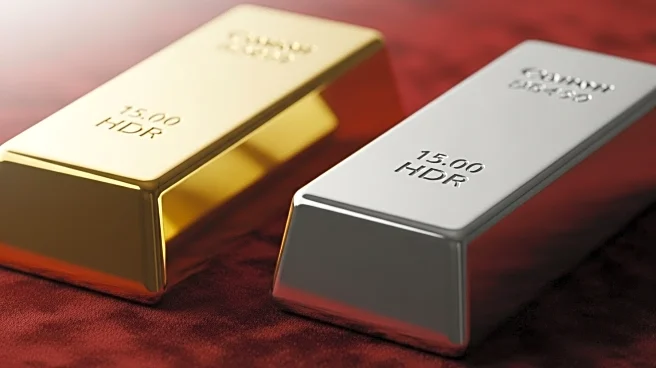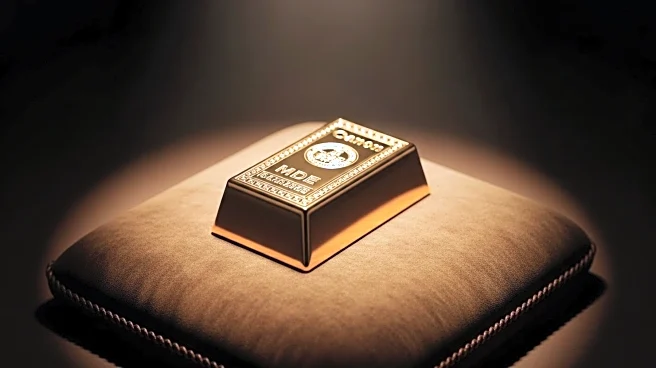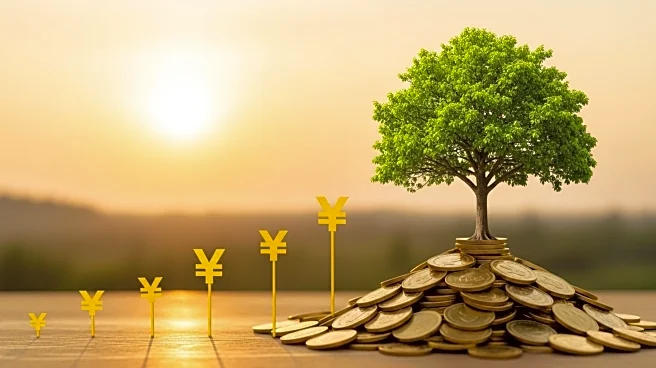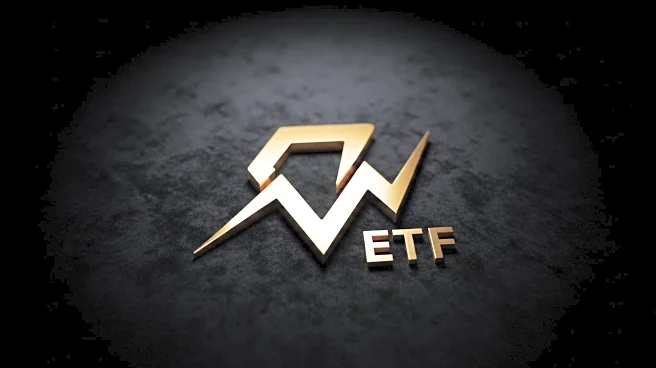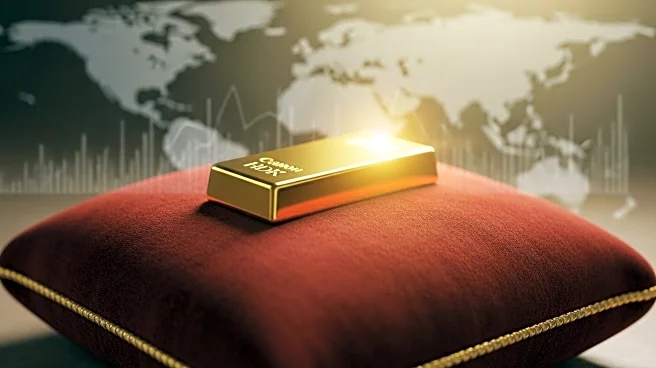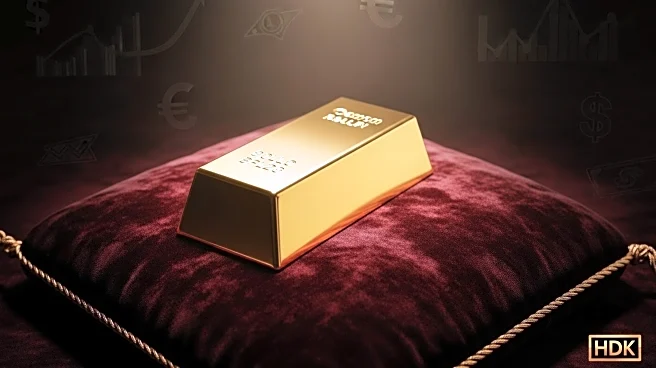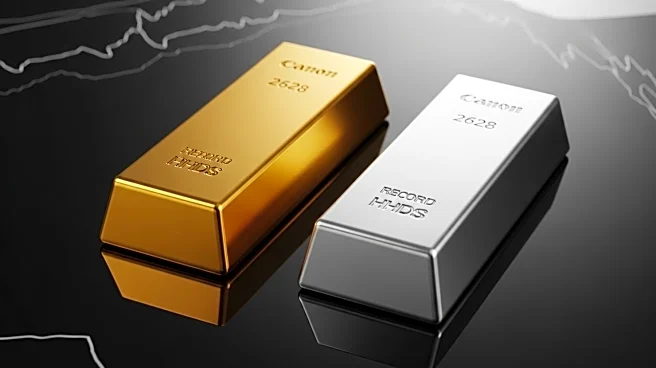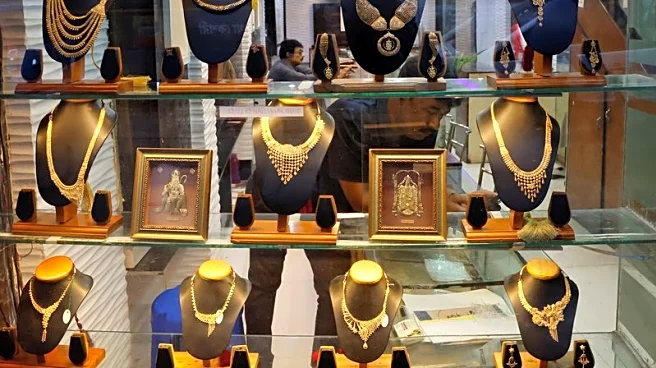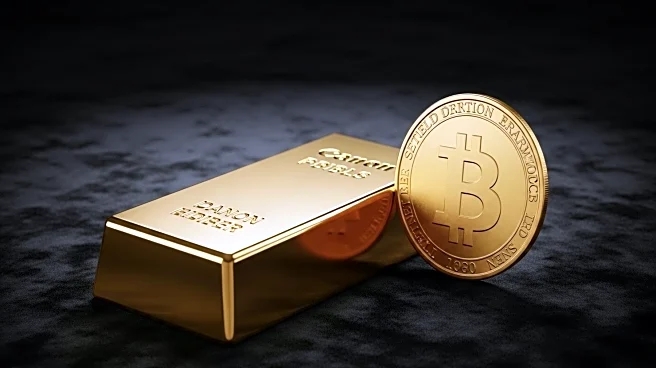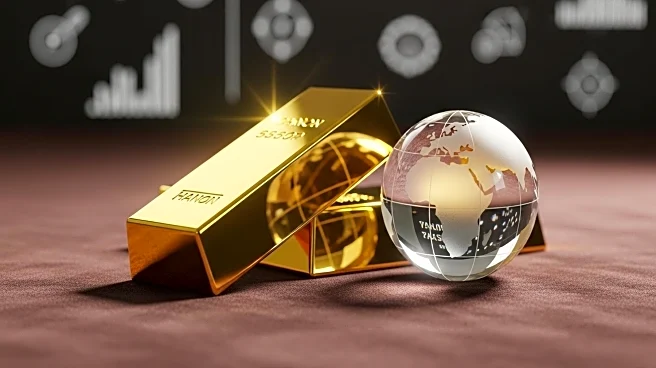What is the story about?
What's Happening?
Gold prices have reached a record high, surpassing $4,000 per ounce in early October 2025, driven by safe-haven buying amid economic and geopolitical uncertainties. Major financial institutions like UBS and Goldman Sachs have projected further increases, with gold potentially reaching $4,200 in the coming months and $4,900 by 2026. Silver has also seen significant gains, nearing its historic peak of $50 per ounce, with HSBC forecasting a volatile trading range between $45 and $53 into the year-end. Despite these bullish forecasts, some market experts warn of a potential crash, suggesting that prices could fall by up to 50% in the coming months, reminiscent of past boom-and-bust cycles.
Why It's Important?
The surge in gold and silver prices reflects broader economic and geopolitical tensions, including potential U.S. government shutdowns, global conflicts, and Federal Reserve rate cut expectations. These factors have led investors to seek refuge in precious metals, which are seen as stable assets during times of uncertainty. The implications for U.S. industries are significant, as rising precious metal prices can impact sectors reliant on these materials, such as electronics and solar energy. Additionally, the bullish outlook from major banks suggests continued investor interest, potentially affecting market dynamics and investment strategies.
What's Next?
The future of gold and silver prices remains uncertain, with potential geopolitical developments and economic indicators likely to influence market trends. Analysts are divided, with some predicting a continuation of the rally based on strong fundamentals, while others foresee a correction due to overvaluation concerns. Central bank buying and investor demand will play crucial roles in determining price stability. The trajectory of U.S. interest rates and the dollar will also be pivotal, as changes in monetary policy could affect the opportunity cost of holding non-yielding assets like gold.
Beyond the Headlines
The current rally in precious metals highlights the complex interplay between market speculation and fundamental economic factors. Ethical considerations arise regarding the environmental impact of increased mining activities to meet demand. Additionally, the cultural significance of gold and silver as symbols of wealth and security may influence investor behavior. Long-term shifts in global economic power dynamics could be triggered by sustained high prices, affecting international trade and monetary policies.
AI Generated Content
Do you find this article useful?
